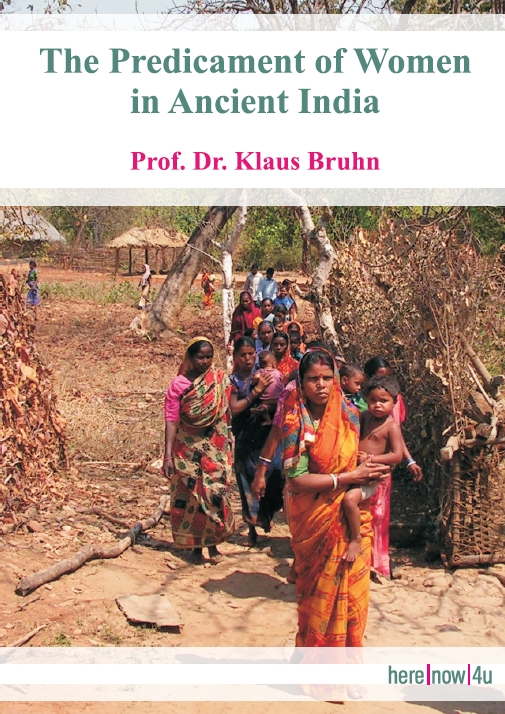Dowry: There is no unequivocal Indian word for dowry (TURNER 6290), and the English word is used all over India. The provision of a dowry by a girl's father was thought to contribute to the bride's future security. Dowry has also been described as "pre-mortem inheritance" (SUTHERLAND 85). The ancient texts use occasionally the word stri-dhana (DERRETT 185), different from stri-dhana as mentioned in § 9.6. ALTEKAR mentions numerous examples of rich dowry from narrative literature (p.70: Mahabharata etc.). In Kalidasa's Raghuvamsha we read that a princess was provided with rich presents for her marriage. ALTEKAR insists that dowry in ancient India was without "pre-nuptial contract of payment" and therefore different from the problematic dowry in our days. See also § 12.6 infra.
Refer for 20th century dowries to KAPADIA 108-109 and MICHAELS 119 (infra), and refer for dowry murder to the Glossary. The following sentence of DERRETT seems to indicate that, historically speaking, ill-treatment of the bride preceded full-fledged dowry-criminality: "A bride whose finery and dowry are inadequate by the standards of her mother-in-law and her sisters-in-law is penalised, and maltreated, and her relationship with her husband is seriously affected thereby." (183) Ill-treatment may be the basis for criminal treatment.
Dowry became widespread in Rajasthan (Rajputana) "from about the 13th or 14th century A.D." But allegedly it assumed only (late) in the ninetieth century "scandalous proportions." (ALTEKAR 71)
Nor was that all. Dowry murder started in the seventies of the 19th century. A recent book title runs "Brides are not for Burning. Dowry Victims in India" (see WEZLER Do 291). "... at least a dozen [brides] die each day [in India] in 'kitchen fires'... " (WinI). A modern manual... recommends as part (!) of the dowry "clothing and cash for the father-in-law, brother-in-law, and sisters-in-law as well as their children... In the wealthy strata of Indian cities today, weddings are produced like film scenes with much glamour and electronic glitter. All legal attempts to stem the giving and taking of dowries have so far been unsuccessful." (MCHAELS 119)
If the father of the bride has at least one son, he can redirect the gain of one marriage (son) to another marriage (daughter) to close the deficit. That is theoretically (?!) possible in families with sons and daughters. -- In India it was never possible to send one daughter 'to the monastery' as it was the custom in many Catholic families in Europe.
Dowry means that "the movement of money and brides is all in one direction" whereas bride price or shulka means that "money moves in the direction opposite to the direction in which brides are given" (KARVE 180).
Shulka has been interpreted as sale of the bride. (The father of the bride sells his daughter.) There are old records of girls in the marriageable age being exposed for sale in the market-place. This was hardly reality in ancient India, but it can help to understand the old aversion to shulka.
The authors of the law-books condemn shulka. "The writers of Dharmasastra literature almost lose their temper in condemning the custom of the bride-price. Baudhayana [author of a law-book] warns the guardians that they will go to the most terrible hell if they sell daughters in marriage...." (ALTEKAR 40-41). And: "Only aged, defective, or inferior bridegrooms, it was thought, would need to purchase a bride." (SUTHERLAND 85) In other words, the purchase of a bride took place only under dire circumstances [when the wealth was more important for the parents than the daughter] and ruined the status of the girl. The prohibition of shulka more or less excluded the possibility of such undesirable unions and protected the girl against evil reports.
Even then we know from narrative literature that bride prices (prices or presents for the bride's father) were actually paid, probably pretty often (JOLLY 52). King Dasharatha (father of Rama) had to pay a bride-price for Kaikeyi (his third wife) to her maternal grandfather. He had to promise succession for a future son (Bharata) by Kaikeyi, instead of making Rama (son of Kaushalya) his heir. The denial of kingship to Rama was the hinge round which the development of the entire action of the Ramayana turned (POLLOCK 26-28, 297-298, 507-508). Furthermore, in the Mahabharata, Pandu had to pay a good bride-price (gold and jewels, elephants and horses) for Madri to Shalya, Madri's brother (JOLLY 52).
The reader will remember that two of the eight forms of marriage are connected with shulka (Asura and Arsha): § 3.
JOLLY 51-52; ALTEKAR 39-42, 69-72; DERRETT; SUTHERLAND (85-87); WEZLER Do [WEZLER quotes on p.297 RANJANA KUMARI, Brides are not for Burning, New Delhi 1989]; MICHAELS 119-120.
 Prof. Dr. Klaus Bruhn
Prof. Dr. Klaus Bruhn
 Title Photo Background:
Title Photo Background: